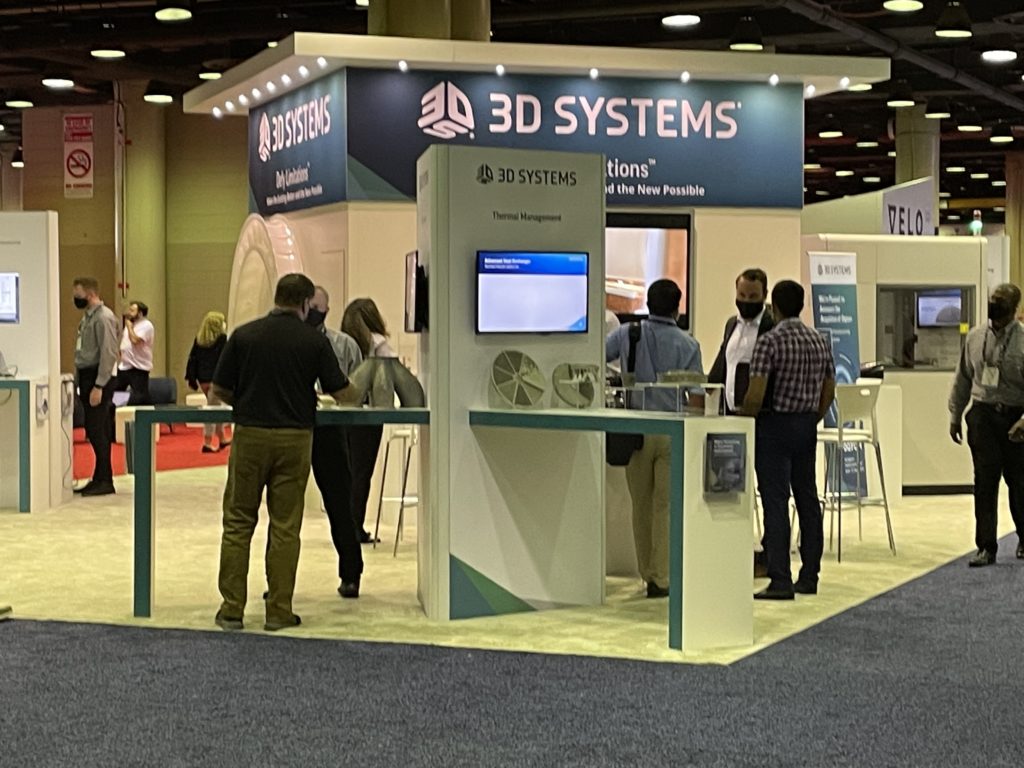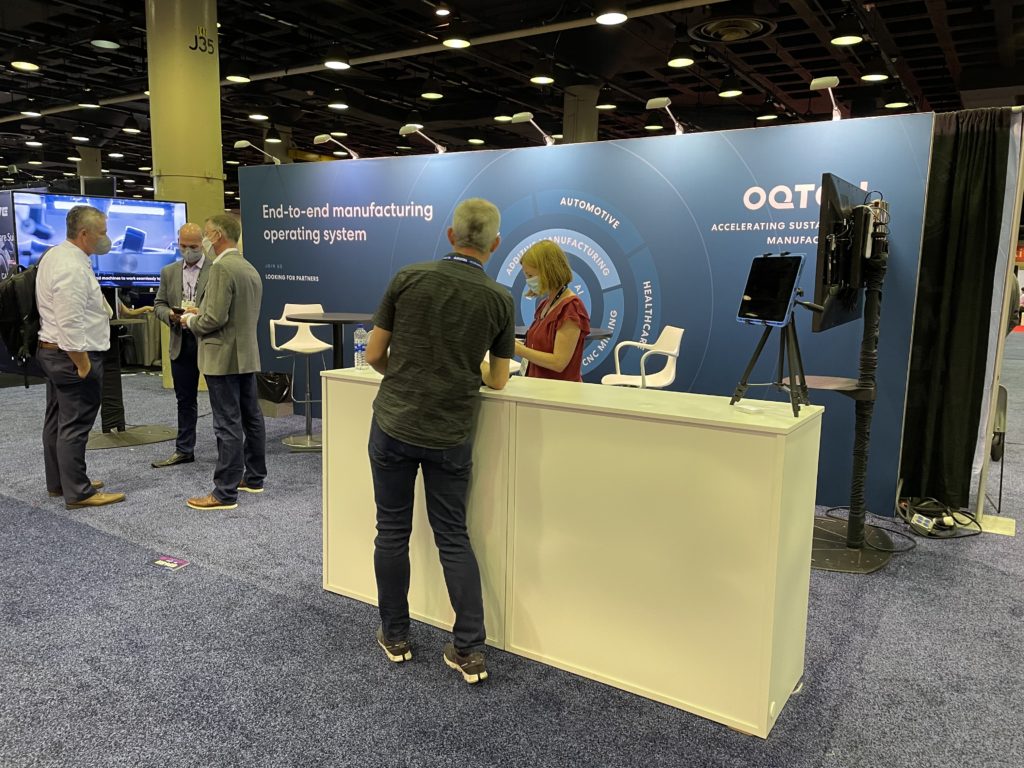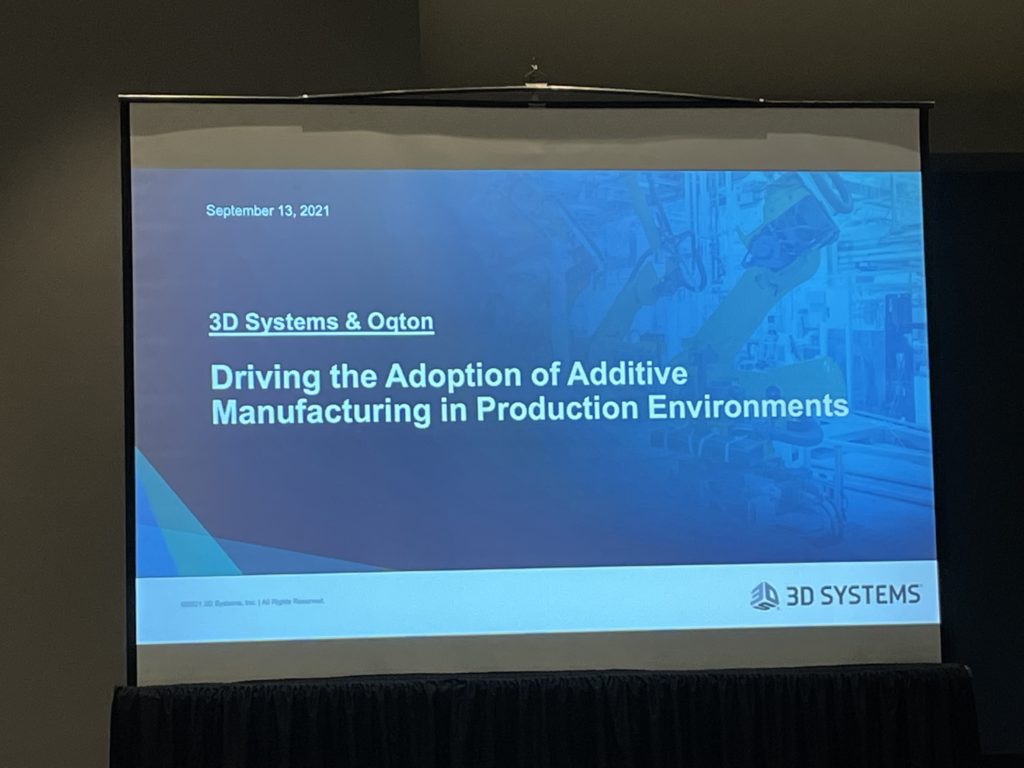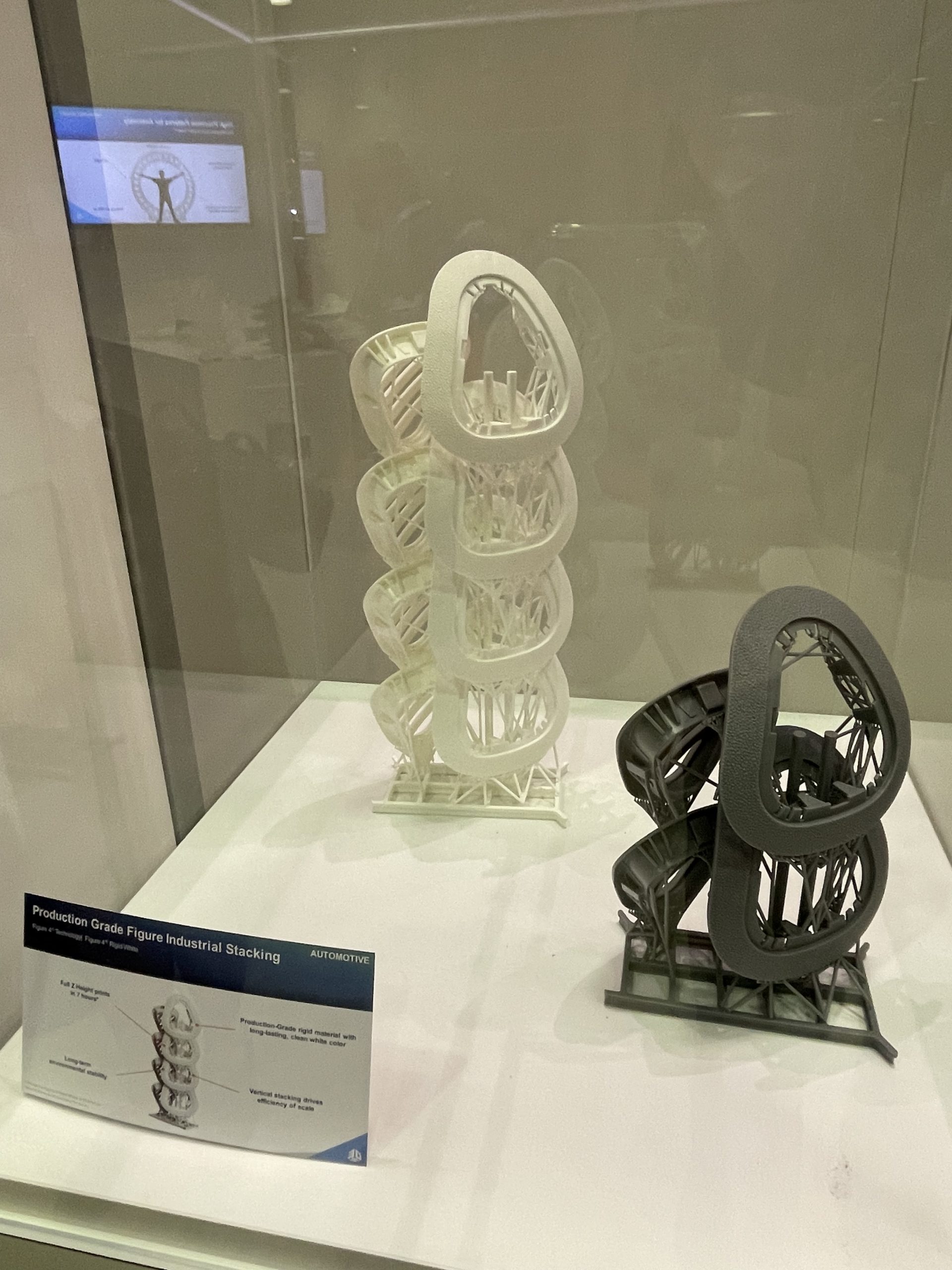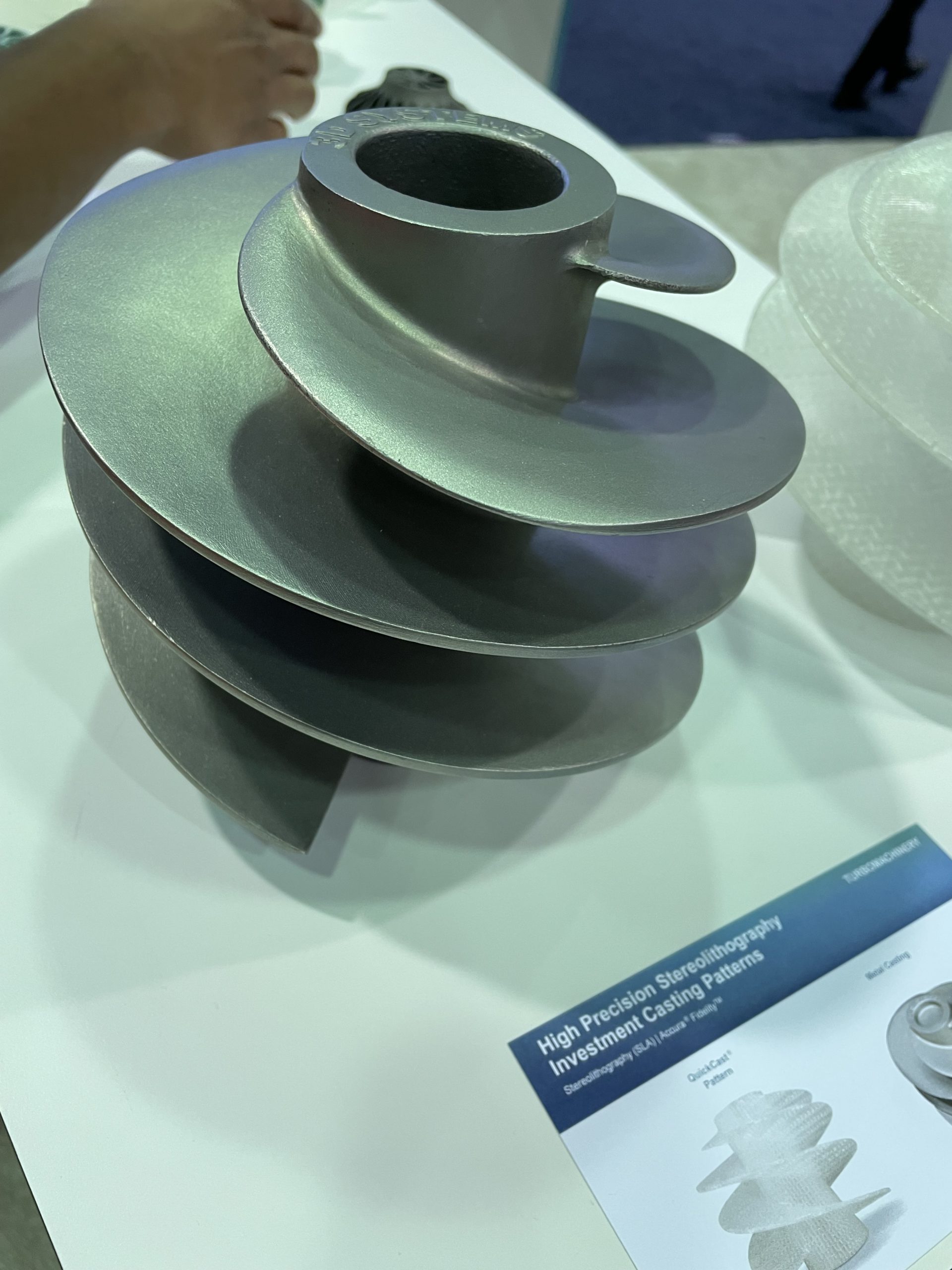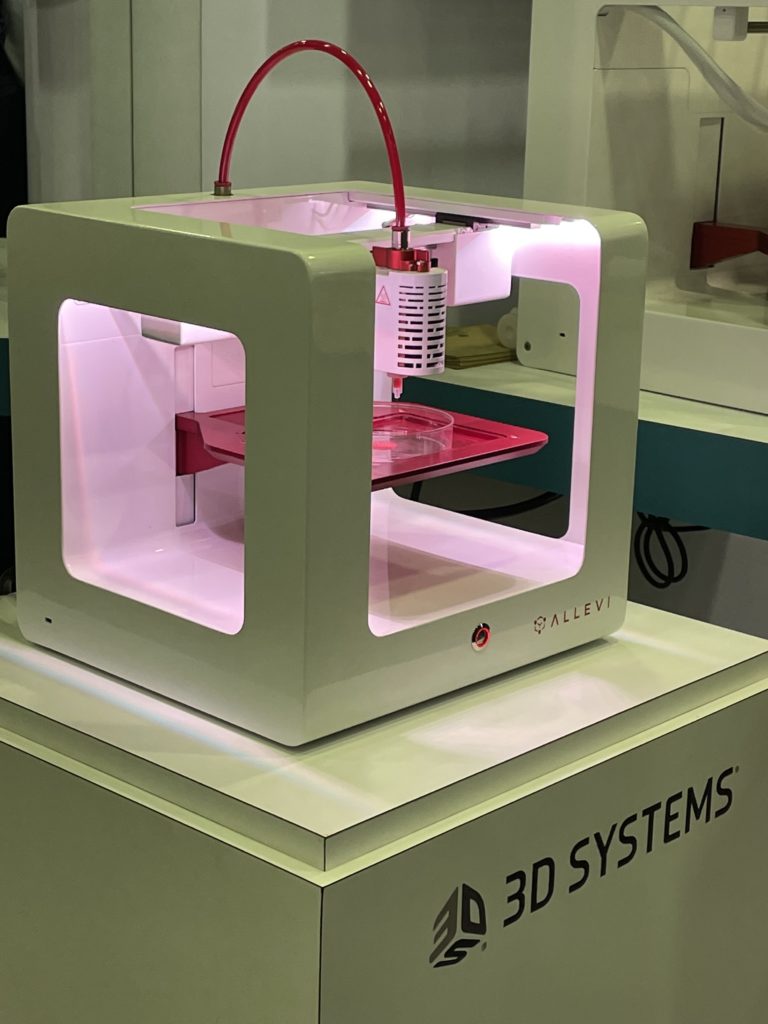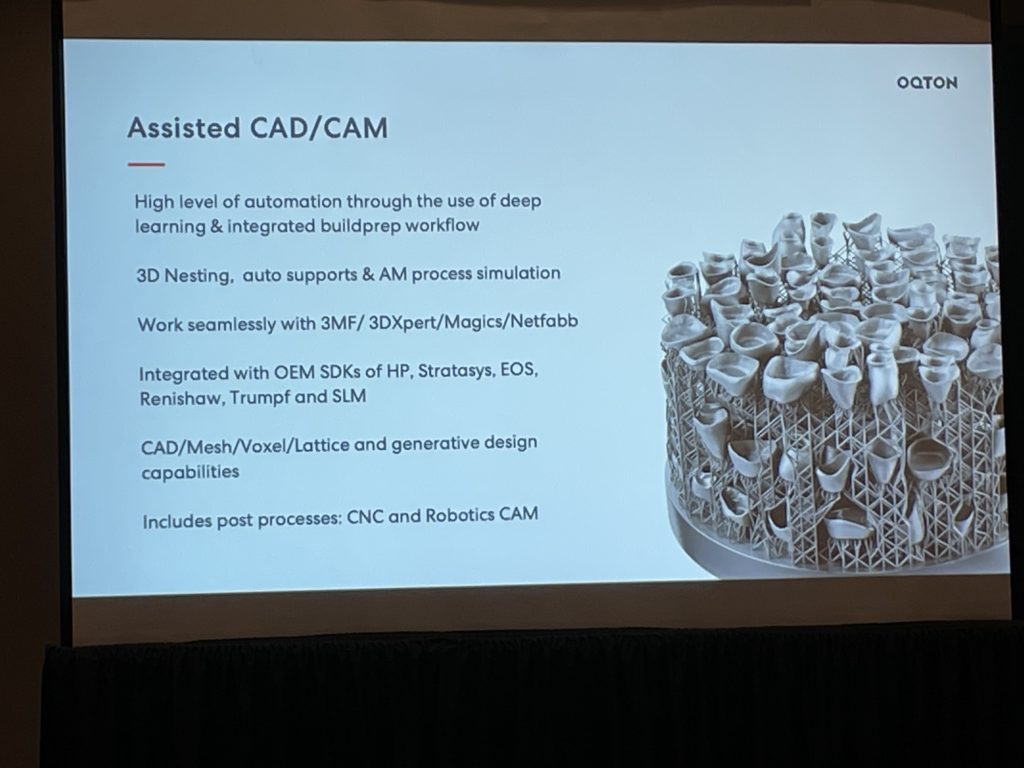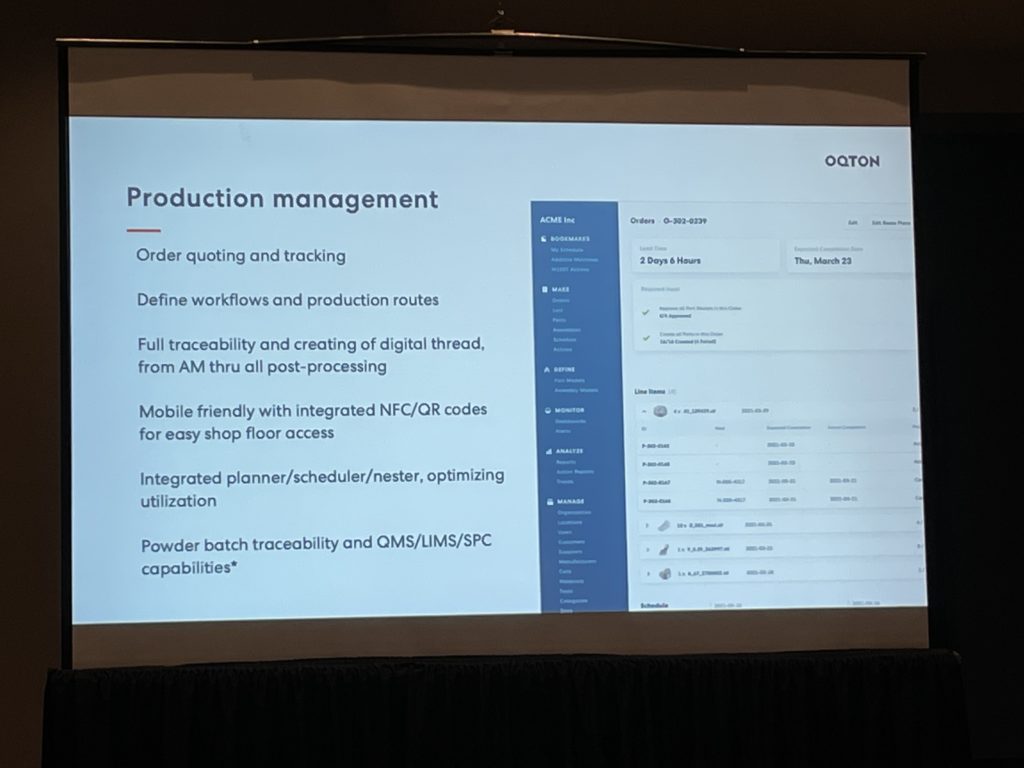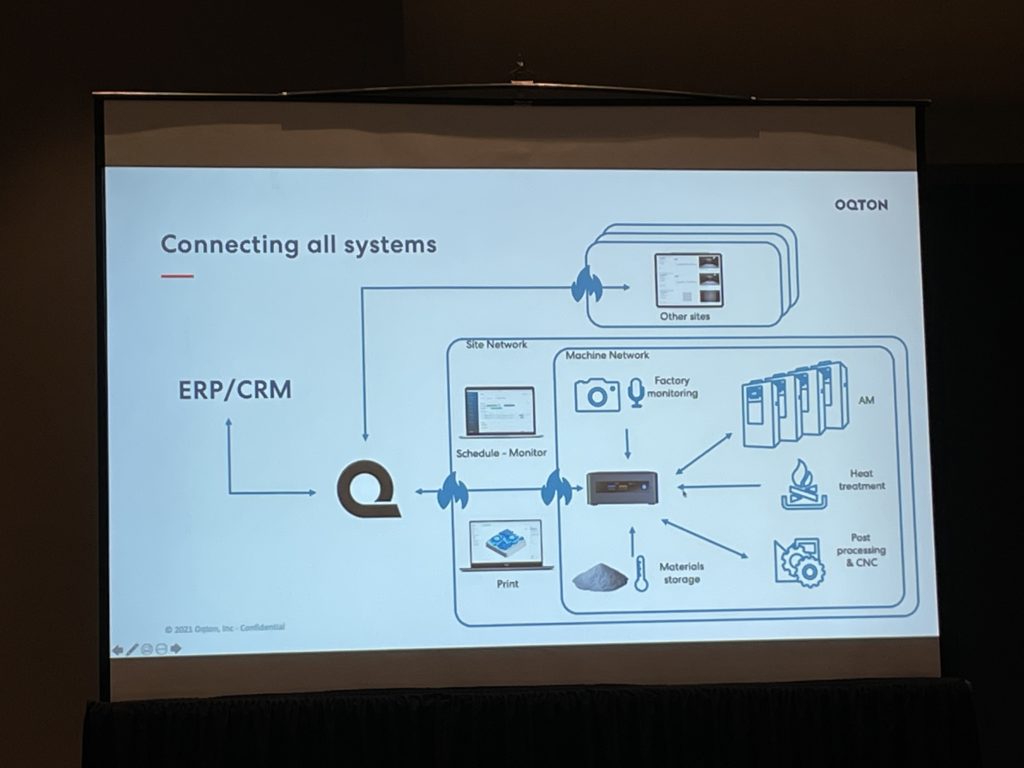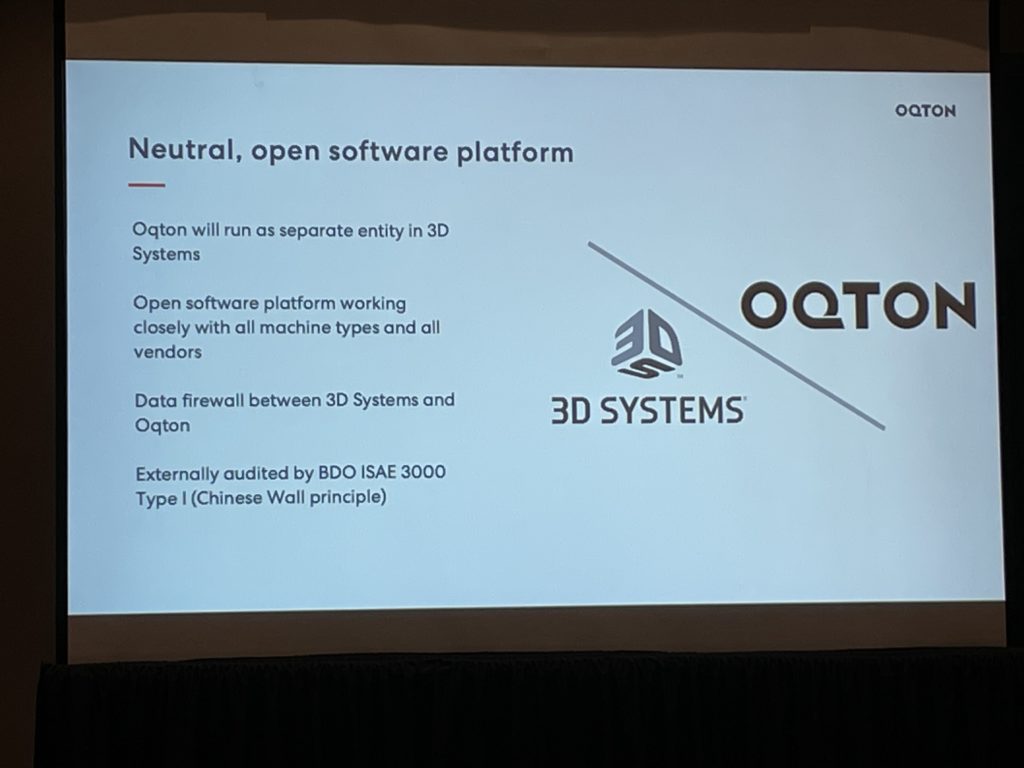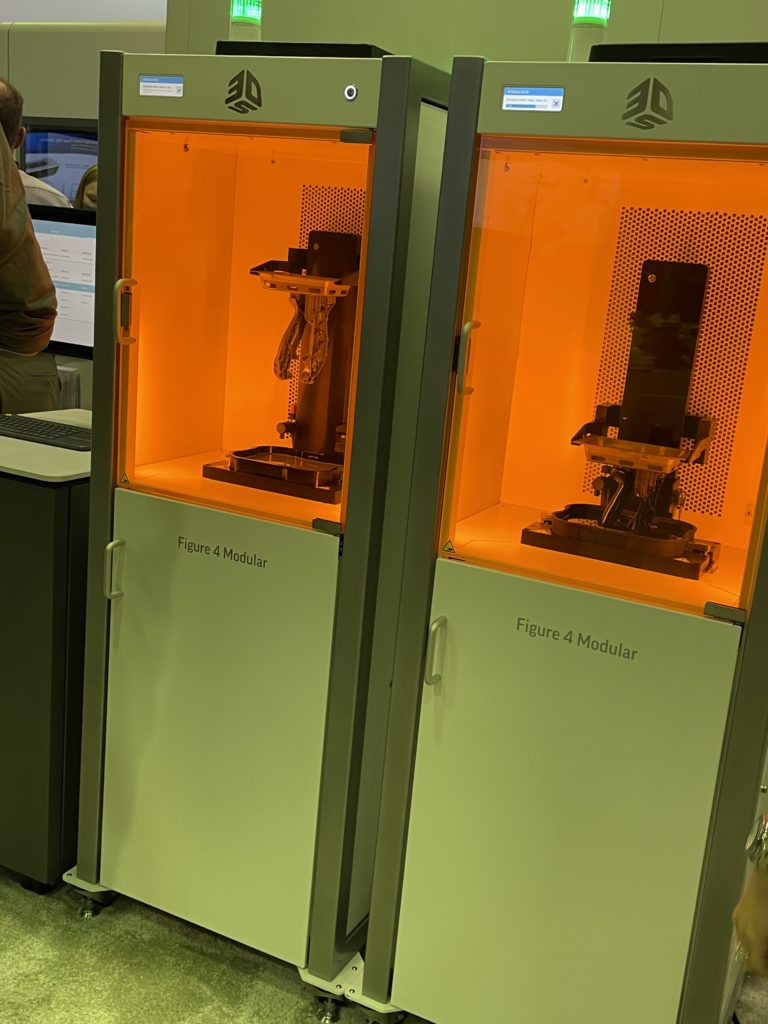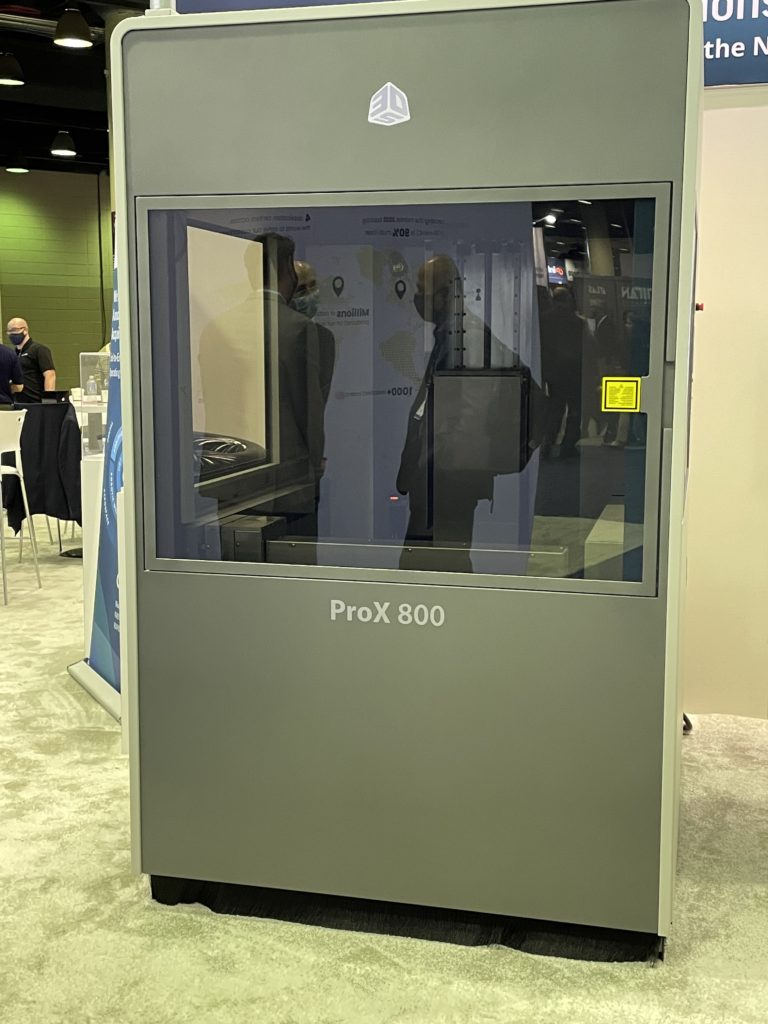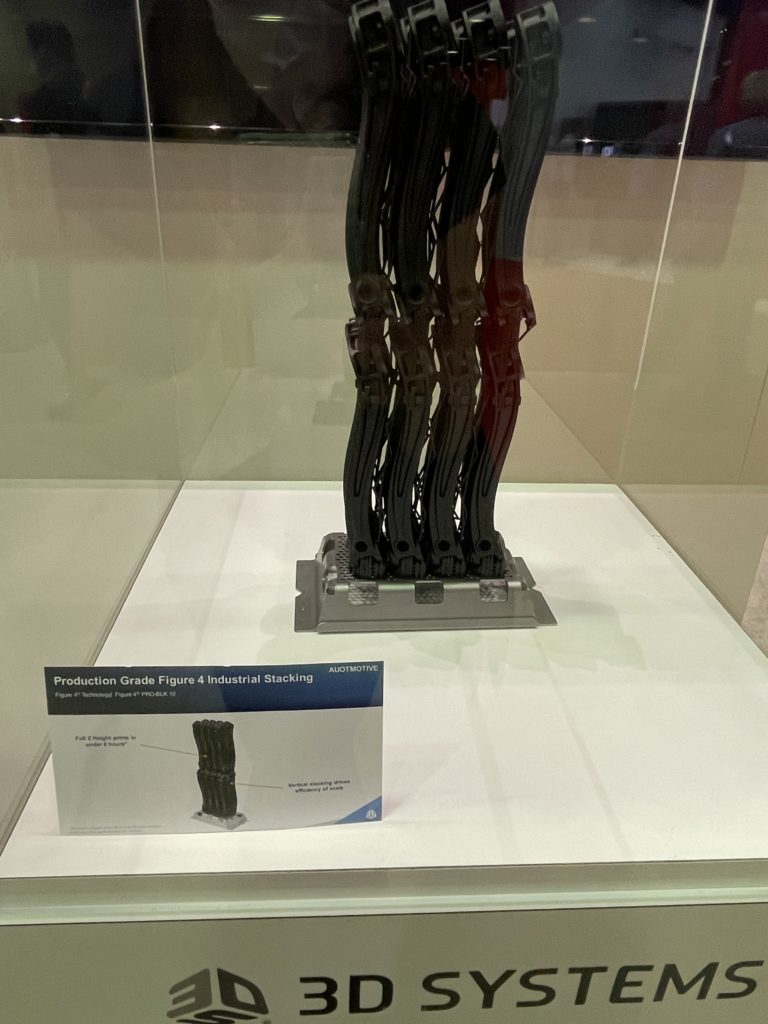In early September, 3D Systems (NYSE:DDD) announced an agreement to acquire software startup Oqton, a global SaaS company that offers an agnostic, intelligent, cloud-based Manufacturing Operating System (MOS) platform which automates the end-to-end AM workflow. In order to optimize customer use of 3D printing and other advanced manufacturing processes, Oqton will continue to operate as an independent organization and solution platform within 3D Systems, which seems like a mutually beneficial agreement. At the recent RAPID + TCT 2021 in Chicago, I was invited to a 3D Systems press conference in order to learn more about the acquisition, and Oqton itself.
It was a pretty long trek from the RAPID show floor all the way across the gargantuan McCormick Place to a private meeting room past the FABTECH 2021 expo, which was happening simultaneously, but it was blissfully quiet inside, which was much appreciated. After the invited attendees were seated with our provided lunch, Jagtar Narula, Executive VP and CFO of 3D Systems, began the press conference.
He explained that in order to drive AM adoption, what customers really need is an MOS that ties together 3D printers and other equipment in a factory workflow.
“It needs to be future-proof, flexible, and efficient, but most importantly it also needs to integrate with legacy systems,” Narula explained. “So we set out to solve that problem to enable the growth of additive manufacturing. We identified that Oqton is the leading platform to solve this problem and address this need, because they integrate with multiple printer types and software.”
He explained that Oqton’s platform covers the entire workflow, and uses machine learning and AI to optimize the various equipment and software systems it integrates with in order to achieve product yield.
“Their approach is very similar to ours,” Narula stated, before explaining that Oqton operates in a mixed environment, i.e. plastics and metals from multiple manufacturers. “So as a result of this mixed technology environment they operate in, we made a decision, as part of this acquisition, that Oqton will operate independently.”
In the company’s Q2 earnings call, 3D Systems announced better-than-expected earnings in what it described as an “exceptional rebound” in cash performance, revenue, and profitability, while also enjoying the benefits of its reorganization into two separate healthcare and industrial business units. As part of this four-phase transformation plan, 3D Systems has been really tightening things up lately, selling off its medical simulation business, its on-demand 3D printing business, and its Cimatron and GibbsCAM software businesses this year, while also acquiring Allevi, Additive Works, and Oqton, and continuing to invest in what it considers important, including software.
Narula explained that, as part of the Oqton acquisition, 3D Systems decided to follow the startup’s system-agnostic approach and open up its own software platforms—3DXpert, 3D Sprint, Geomagic, and Additive Amphyon—to the whole AM industry.
“We’ll also open up our equipment to provide SDKs and APIs for third party integration,” he said.
Then, Ben Schrauwen, Oqton’s CEO and Co-Founder, gave a brief history of Oqton, which was founded in 2017 to apply AI-based techniques to complex problems within the manufacturing industry. He explained that Industry 4.0 is “just beyond the horizon,” and that Oqton is “working to accelerate sustainable manufacturing.”
From start to finish, Oqton’s workflow is cloud-based and powered by artificial intelligence; the former allows the startup to work with smaller organizations, and “bring them all together to deploy our Software as a System.”
“Cloud manufacturing is sensitive, so we use a hybrid solution,” Schrauwen explained. “We tried to leverage AI technologies to deliver to our customers.”
As Schrauwen told the room, Oqton has built the AI into its system in order to automate build preparation processes, such as nesting.
“Because of our vertical approach, we pre-train these AI models and deploy them to customers in various sectors like dental and automotive.”
He gave the example of a dental lab, saying that a print job could be taking place from 8 am until 2 am, but then there’s hours of downtime until a tech comes in and can start the next build at 8 am again. Oqton negates all that downtime, because it can automate the print prep for the next job and keep the printer from sitting idle. This end-to-end solution can also be applied to robotics and CNC machining, not just 3D printing.
“That’s the valuable solution we offer,” Schrauwen said.
Schrauwen mentioned the “true digital thread” that Oqton creates, explaining that for every part that leaves a customer’s facility, they’ll know its full traceability: what machine it came from, which operators worked on it, and more.
“Oqton allows you to go back and get all that data.”
Schrauwen said that with machine monitoring tools, Oqton can also use sound data to determine any issues, which I think is really interesting.
“If there’s a problem with a piece of welding equipment, we can listen to the noise and determine exactly which one is having a problem,” he explained.
It’s really important that Oqton’s cloud solution is able to connect to all systems that have invested in it. That’s the beauty of APIs, like what 3D Systems will start to offer with its software now—these partners can easily connect any available system. Additionally, because it’s a cloud system, the solution can also connect to other countries.
Wrapping up, they explained that 3D Systems has a strategy to build out an open software system, and while part of that will be from Oqton, the other part was already included in 3D Systems’ existing solution.
“One of the things we’ll do is enable seamless connected workflows between their printers with the Oqton platform, it’s the backbone.”
Customers will still have the option to purchase 3D Systems software separately, but now that they’ll be cloud-connected thanks to Oqton, users can have access to seamless, fully traceable workflows.
Before taking questions, Schrauwen and Narula reiterated that, while Oqton has been acquired by 3D Systems, it will remain running as a separate entity.
One person asked how many of Oqton’s 65 existing clients were in the AM industry, and Schrauwen said that about 90% of its customer base is 3D printing-based, in a broad range of industries from medical device production to dental labs. Someone else wondered if Oqton will grow by linking up with 3D Systems, while also maintaining its existing relationships.
“It’s a strategic fit between their portfolio and what we have in our cloud. It’s a very strong software strategy.”
Finally, someone asked if the Oqton interface also had a mobile component, and the answer to that was a resounding yes.
“Anything you manage in Oqton, like batches, systems, and parts, gets a QR code, and you can then see the next action item in your cell phone. Everything works off of digital signatures as well.”
The next day, I got to sit down with David Leigh, PhD, who joined 3D Systems as its Chief Technology Officer for Additive Manufacturing just a few months ago, after most recently serving as CTO at EOS; additionally, Dr. Leigh also won SME’s 2021 AM Industry Achievement Award the night before.
I asked him his thoughts on the Oqton acquisition.
“Generally speaking, I really see it that we as an industry have a lot of different machines, and a lot of them do the same thing. When you walk through the show floor here at RAPID and visit the other companies, they have engineers that are making the same kind of operating systems to do builds, manage parameters, etc.,” he said. “It’s a big tax we as an industry have to pay for these engineers to do the same thing.”
He explained that at the moment, the industry doesn’t really have one single operating system that will work on both an SLS printer and a printer from EOS.
“Acquiring Oqton allows us to go from a siloed solution to a functional solution,” Dr. Leigh said. “Here is your operating system, here are your applications. Maybe you have a faster or slower computer, but in the applications space, I think the user interface should be pretty consistent. It’s very hodgepodge currently. This will be, we think and hope, a connector to all the different inputs and outputs in the manufacturing world.”
Dr. Leigh said that when he first started in the additive manufacturing industry in 1989, the machines had UNYX operating systems, while the computers were DOS, and Windows 3.1 had to be installed on DOS, and an emulator was then used to communicate between the two.
“All those steps to get from one to the other, they’re not always standard interfaces, and we haven’t progressed much past that,” Dr. Leigh said.
A lot of the errors that can occur when different systems have to communicate with each other go away when those interfaces are standardized.
“You want humans to be creative in some aspects, but not in making your chicken sandwich at Chick-fil-A,” he explained. “You want a very consistent chicken sandwich – you want it to be good quality, don’t get creative with the chicken sandwich. That’s where we are in the 3D printing world.”
Dr. Leigh explained that a software solution like Oqton allows users to have evaluated experiences that teach, and orchestrated solutions that allow for freedom.
“You can start to quantify your evaluated experience and make it better next time. So a manufacturing operating system allows us to orchestrate and evaluate the full manufacturing chain, from design to finished part.”
He told me some about his background, starting with his time in Texas at DTM Corporation, which “invented polymer laser sintering” and was acquired by 3D Systems in 2001.
“So the laser sintering systems we have here were the old DTM systems,” he said.
Dr. Leigh worked with lasers, materials, calibration, and in services, learning how to install machines around the world, with no instruction manuals or help desks. Then he left field service and founded 3D printing service bureau Harvest Technologies, where he worked for nearly two decades until it was sold to Stratasys in 2014. He then spent about three years at Stratasys, first as Senior VP of Engineering and then Senior VP of Emerging Technologies, working on internal research and M&As.
“I spun off Vulcan Labs, a metal technology that was acquired by EOS, and was Chief Operating Officer, North America, for EOS, and then I was the CTO there for the last three years. Then two months ago, I came to 3D Systems.”
During his tenure in the AM industry, in order to “build the ecosystem for manufacturing,” Dr. Leigh worked with partners to start the Advanced Laser Solutions (ALM) arm of EOS, as well as Integra Services, which was able to modify machines in order to fabricate production-grade parts. He also worked with Dr. Brent Stucker, 3D Systems’ new Chief Scientist, as a partner at 3DSIM, which was acquired by ANSYS in 2017.
“My focus has been getting prototypes to production, getting materials and modified machines to win those races,” Dr. Leigh told me. “It’s a unique time for 3D Systems and for the industry, bringing it all to one place.”
He said that 3D Systems has “a history of acquiring,” which is almost an understatement, considering that the company acquired 50 businesses in about five years, before Vyomesh Joshi took things over in 2016.
“It’s hard to get any traction when you get that much acquisition,” Dr. Leigh stated. “Now we’ve mostly cleaned up the balance sheet, and focused on what’s core to additive manufacturing. We’re working on reestablishing the human capital, and ultimately I think that’s what Oqton is. It’s the people who can program and think that way. The human capital is pretty significant in the software solutions.”
He said that if we’re comparing 3D Systems in the last two years to a race, he is not the first leg, explaining that CEO Dr. Jeff Graves, who comes from more traditional manufacturing, assessed the company’s situation and brought some industry discipline, identifying what’s important and getting rid of the rest.
“So we’re in that second leg, which is starting the execution of the first leg with more divestiture and targeted investment,” Dr. Leigh explained. “The third leg is pivoting the organization to execute, so more organizational—what can we do inside the company, and not more acquisitions and consultants. I anticipate this leg will happen in the next 6-12 months, and once we can get executing, we can ultimately start to scale.”
According to Dr. Leigh, the first two legs of the race are roots, while the third is growth, and the fourth is exponential.
As our time together came to a close, I asked him why he chose to come to 3D Systems, and what he said made a lot of sense to me.
“I want to be able to make an impact,” he explained. “What’s a painting or song if there’s no audience to hear? In the 3D printing world, if that’s my thing, and my canvas to paint, I need to find the biggest one on which to paint, and that’s 3D Systems, because of its pioneer status with Chuck Hull, its public company status, and the fact that it’s a growing company with profitability and a broad range of technologies.”
He also noted that the company has assets, meaning that “there’s still paint to use, we’re not at the bottom of the can.”
“I think I can make a positive impact, and not just for 3D Systems, but for my own goals as well.”
Stay tuned for more of our coverage from RAPID + TCT 2021!
Subscribe to Our Email Newsletter
Stay up-to-date on all the latest news from the 3D printing industry and receive information and offers from third party vendors.
You May Also Like
3D Printing Financials: Fathom Struggles in Financial Quicksand During Critical Transition
Facing a year of key transitions and financial pressures, Fathom (Nasdaq: FTHM) has filed its annual report for 2023 with the U.S. Securities and Exchange Commission (SEC). The document outlines...
Latest Earnings Overview for Australian 3D Printing Firms Titomic and AML3D
Australian 3D printing manufacturing firms Titomic (ASX: TTT) and AML3D (ASX: AL3) reported their financial results for the period from July to December 2023, marking the first half of their...
3D Printing Webinar and Event Roundup: April 7, 2024
Webinars and events in the 3D printing industry are picking back up this week! Sea-Air-Space is coming to Maryland, and SAE International is sponsoring a 3D Systems webinar about 3D...
3D Printing Financials: Unpacking Farsoon and BLT’s 2023 Performance
In the Chinese 3D printing industry, two companies, Farsoon (SHA: 688433) and Bright Laser Technologies, or BLT (SHA: 688333), have recently unveiled their full-year earnings for 2023. Farsoon reported increases...


